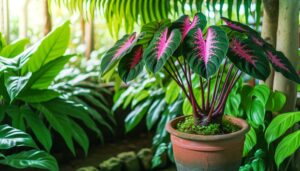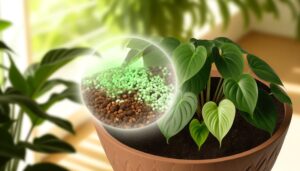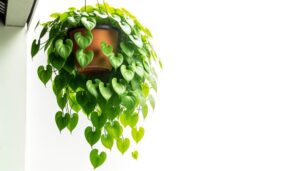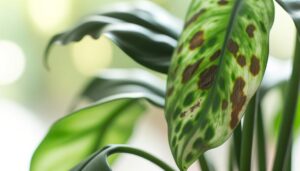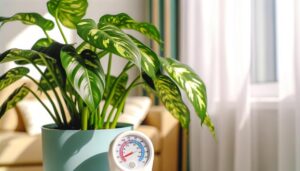What Is the Adult Size of a Philodendron Birkin?
The Philodendron Birkin (Philodendron hederaceum) typically reaches an adult height of 50-100 cm and measures 30-60 cm in width. Growth rate ranges from 10-15 cm annually under best conditions, which include bright, indirect light, adequate humidity, and nutrient-rich soil.
Appropriate pot size and drainage are essential for healthy root development, impacting hydration and stability. Regular pruning and ample space allow for controlled growth and aesthetic refinement.
Proper environmental conditions and fertilization further support its robust development. Accessing detailed cultivation guidelines will enhance your understanding of nurturing this ornamental plant successfully.
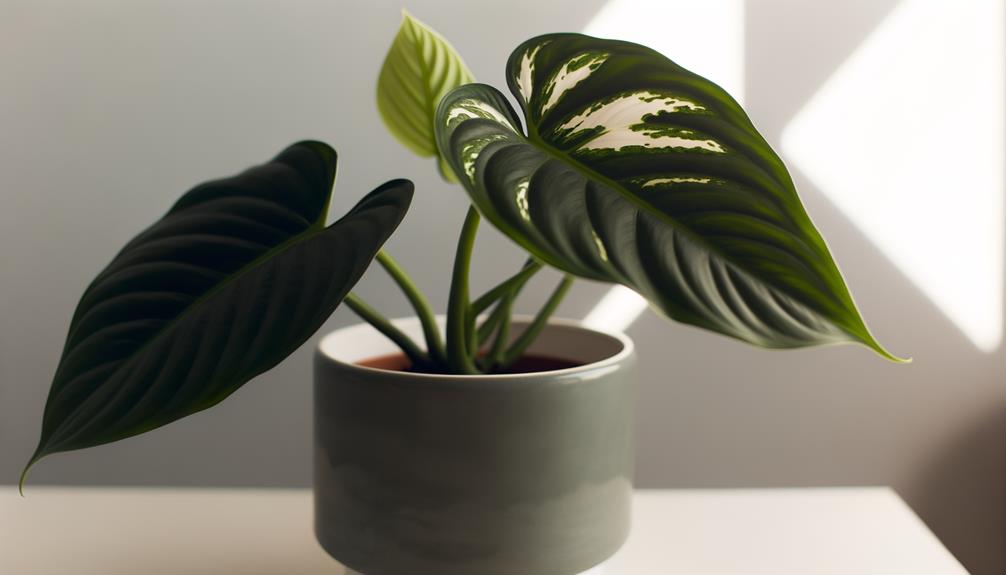
Key Takeaways
- Philodendron Birkin typically reaches a height of 50-100 cm.
- The plant usually spreads to a width of 30-60 cm.
- Growth is influenced by genetics, light exposure, and nutrients.
- Ideal conditions foster an annual growth rate of 10-15 cm.
- Regular pruning helps maintain the plant's height and spread.
Typical Height
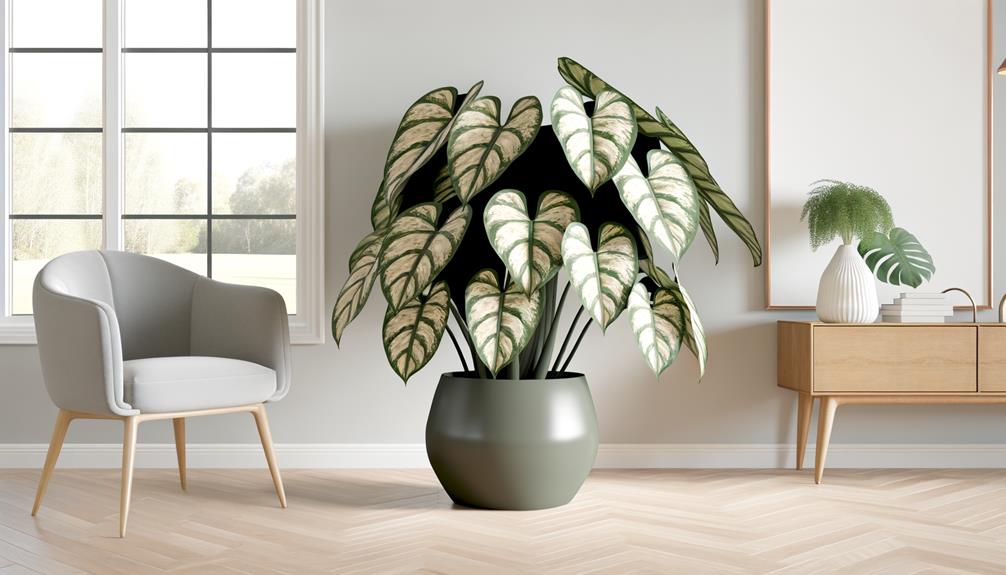
The Philodendron Birkin typically reaches an adult height of approximately 50 to 100 centimeters under ideal growing conditions. This height range is achievable when the plant is provided with optimal light, humidity, and nutrient levels.
The species is characterized by its robust vertical growth, facilitated by the development of a sturdy central stem (caulis). It is essential to maintain a consistent temperature range of 18-24°C (64-75°F) to ensure healthy growth.
The Philodendron Birkin's unique variegated leaves (folia variegata) derive their distinctive patterns from genetic variations, which do not affect its height but contribute to its aesthetic appeal.
Regular pruning can control the plant's height, but under standard conditions, it will naturally stabilize within the specified range.
Average Width
Under perfect conditions, Philodendron Birkin typically achieves an average width of 30 to 60 centimeters, guaranteeing a balanced and compact growth habit. This range is dependent on factors such as light exposure, nutrient availability, and humidity levels. The compact width is a distinguishing characteristic of Philodendron Birkin (Philodendron 'Birkin'), contributing to its popularity as an attractive indoor plant. Importantly, the plant's spread can be managed through regular pruning and appropriate pot size.
| Condition | Width Range (cm) |
|---|---|
| Ideal Light | 30 – 60 |
| Prime Nutrients | 30 – 60 |
| High Humidity | 30 – 60 |
| Regular Pruning | 30 – 60 |
Maintaining these conditions can help preserve the plant's aesthetic appeal and promote its healthy development.
Growth Rate
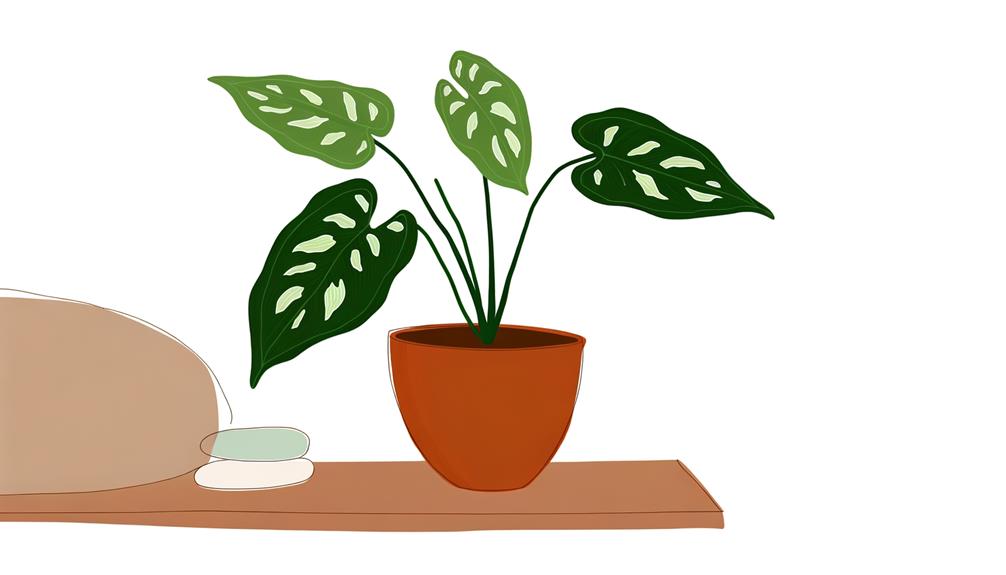
Growth rate of Philodendron Birkin (Philodendron 'Birkin') is moderately-paced, typically achieving approximately 10 to 15 centimeters of vertical growth annually under ideal conditions. This growth rate is influenced by several factors including light intensity, humidity levels, and nutrient availability.
The following aspects contribute significantly to the growth dynamics of Philodendron 'Birkin':
- Photosynthetic Efficiency: Adequate light exposure enhances chlorophyll production, directly impacting growth rate.
- Watering Regimen: Consistent moisture levels, without waterlogging, facilitate optimal cellular functions and expansion.
- Nutrient Supply: Proper fertilization guarantees essential macronutrients and micronutrients are available, promoting robust development.
Understanding these parameters allows for better cultivation practices, ensuring the Philodendron 'Birkin' reaches its full capacity in both size and health.
Ideal Conditions
Ideal growth conditions for Philodendron 'Birkin' require a balanced environment encompassing specific light intensity, humidity levels, and consistent nutrient availability. Best light conditions require bright, indirect sunlight with a photosynthetically active radiation (PAR) range of 100-200 µmol/m²/s.
Relative humidity levels should be maintained between 60-70%, mimicking the plant's native tropical climate. Soil should be well-draining, rich in organic matter, with a pH range of 5.5-6.5.
Regular fertilization using a balanced, water-soluble fertilizer with an N-P-K ratio of 10-10-10, applied bi-monthly during the growing season, is advisable. Temperature should be regulated between 18-24°C (65-75°F).
Consistent moisture without waterlogging is essential, necessitating a watering regimen that maintains evenly moist soil.
Pot Size Impact
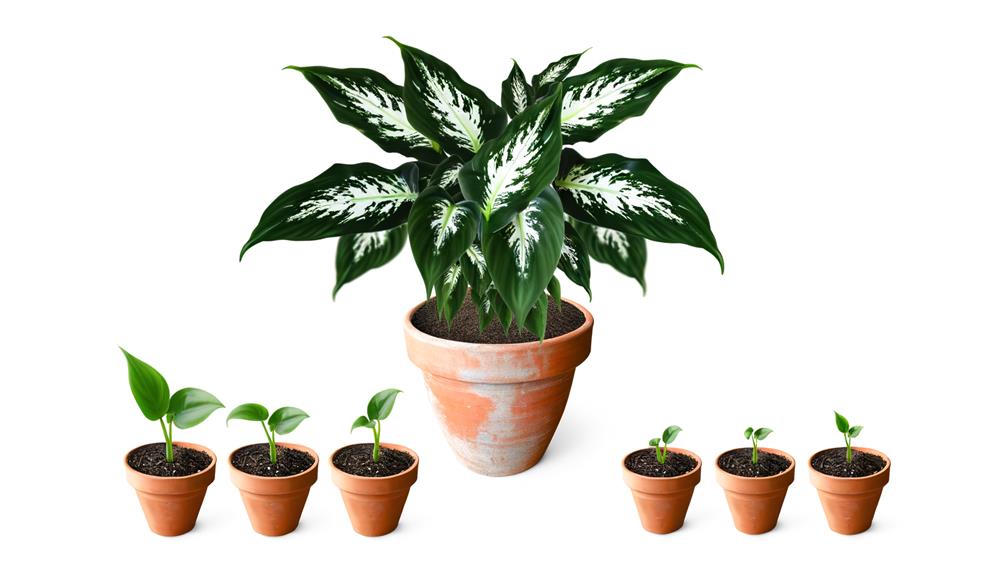
The pot size greatly influences the growth dynamics of *Philodendron Birkin* by determining root expansion space, optimizing water retention efficiency, and ensuring structural stability.
Adequate root space, typically ranging from 15 to 20 centimeters in diameter, promotes healthy root development and overall plant vigor.
Additionally, proper pot dimensions contribute to balanced moisture levels and provide essential support against tipping.
Root Growth Space
Best development of Philodendron Birkin necessitates careful consideration of pot size to guarantee ample root growth space. Proper allocation of root space is paramount for *Philodendron birkin* to achieve its peak size, often reaching heights of 50-100 cm. Inadequate pot dimensions can lead to root-bound conditions, restricting nutrient uptake and stunting growth.
Key factors for selecting an appropriate pot size include:
- Root Ball Diameter: Assure the pot is 2-3 inches wider than the root ball to accommodate expansion.
- Depth Requirements: Vertical space should allow for at least 8-12 inches of root depth, promoting healthy root development.
- Material Considerations: Pots made from breathable materials, like terracotta, enhance aeration and prevent waterlogging.
Ensuring these conditions supports strong growth and overall plant health.
Water Retention Efficiency
Efficient water holding capacity of a container directly impacts the hydration status and overall health of *Philodendron birkin*, with container size playing a critical role in achieving the necessary balance.
Ideal container size, typically ranging between 15 to 25 centimeters in diameter, ensures sufficient moisture retention without causing waterlogging. Terra cotta containers, known for their porous nature, facilitate better aeration, thereby preventing root rot. Conversely, larger containers may hold excessive water, leading to anaerobic conditions harmful to root health.
Using a well-draining potting mix, consisting of 40% perlite and 60% peat moss, further improves water holding efficiency.
Regular monitoring and adjusting the watering schedule according to seasonal variations is essential for maintaining the best hydration levels for *Philodendron birkin*.
Stability and Support
Pot size greatly affects the stability and structural support of *Philodendron birkin*, with ideal dimensions guaranteeing balanced growth and preventing toppling. The root system of *Philodendron birkin* requires sufficient space for expansion, typically necessitating a pot diameter of 20-25 cm. Proper pot sizing mitigates risks associated with root-bound conditions and promotes best nutrient uptake.
Root Anchorage: Adequate pot size facilitates strong root anchorage, essential for supporting the plant's vertical growth.
Weight Distribution: A well-sized pot ensures uniform weight distribution, reducing the likelihood of the plant tipping over.
Drainage Efficiency: Larger pots often have superior drainage systems, preventing waterlogging and root rot, which can compromise plant stability.
Selecting the correct pot size is therefore crucial for maintaining *Philodendron birkin* health and stability.
Pruning Tips
Pruning Philodendron Birkin (Philodendron 'Birkin') involves the removal of any yellowing or damaged leaves to promote healthier growth and maintain an aesthetically pleasing appearance. Employ sterilized pruning shears to make clean, precise cuts just above a node, where new growth can emerge. Target leaves that exhibit chlorosis or necrosis, as these can divert essential nutrients from healthy foliage.
Additionally, thinning out overly dense areas will improve air circulation and light penetration, reducing the risk of fungal infections. Perform pruning during the plant's active growth phase, typically in spring or early summer, to ensure best recovery and regrowth. Regularly inspect the plant for signs of distress, adapting your pruning strategy as necessary to maintain its vigor and structural integrity.
Space Requirements
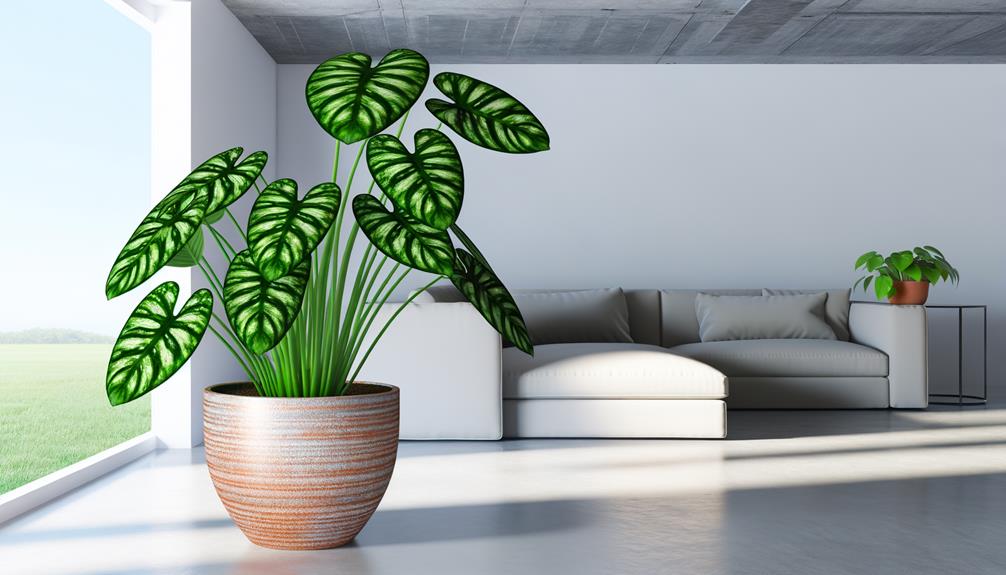
To accommodate the mature size of Philodendron 'Birkin', which can reach heights of up to 1 meter and a spread of approximately 60 centimeters, it is necessary to provide ample space for both vertical and lateral growth. Ensuring proper spatial parameters is essential for best photosynthesis and air circulation.
- Container Dimensions: Utilize a pot with a minimum diameter of 30 centimeters to support root expansion.
- Placement: Position the plant in an area that offers at least 1.5 meters of vertical clearance and 1 meter of horizontal space to avoid overcrowding.
- Environmental Conditions: Maintain ambient conditions with relative humidity levels between 60-70% and temperatures ranging from 18-24°C, facilitating ideal growth.
These considerations are crucial for maintaining the health and aesthetic appeal of Philodendron 'Birkin'.
Conclusion
Philodendron Birkin, with the scientific name Philodendron 'Birkin,' typically reaches an adult height of 1-3 feet and an average width of 1-2 feet. Growth rate is moderate under ideal conditions, including indirect light, temperatures between 65-80°F, and high humidity.
Pot size can influence growth, necessitating periodic repotting. Pruning encourages bushier growth and maintains size. The theory that larger pots accelerate growth requires validation through controlled studies to ascertain its reliability within horticultural practices.

